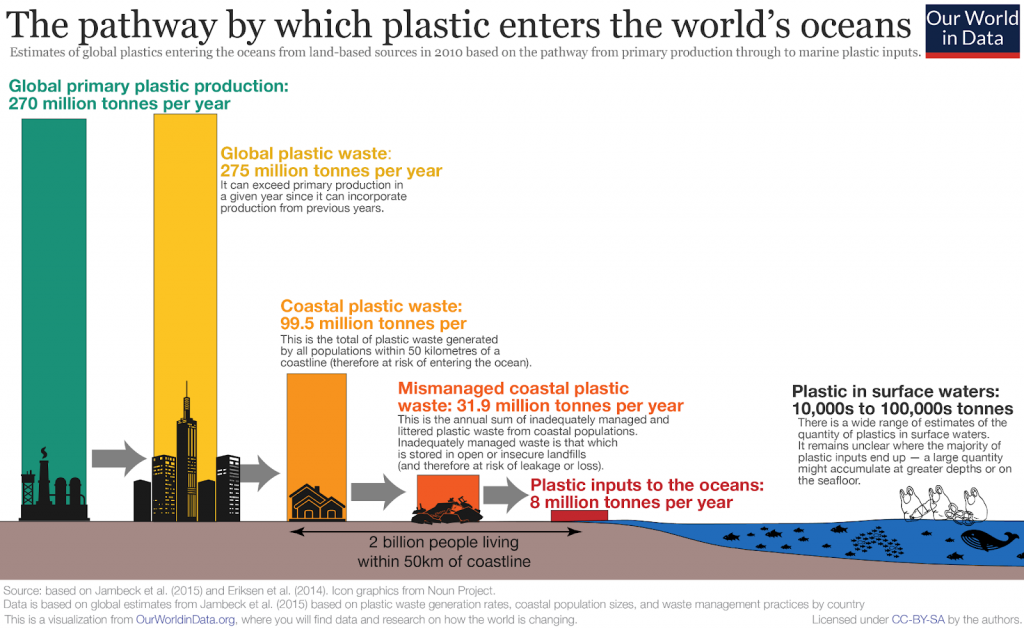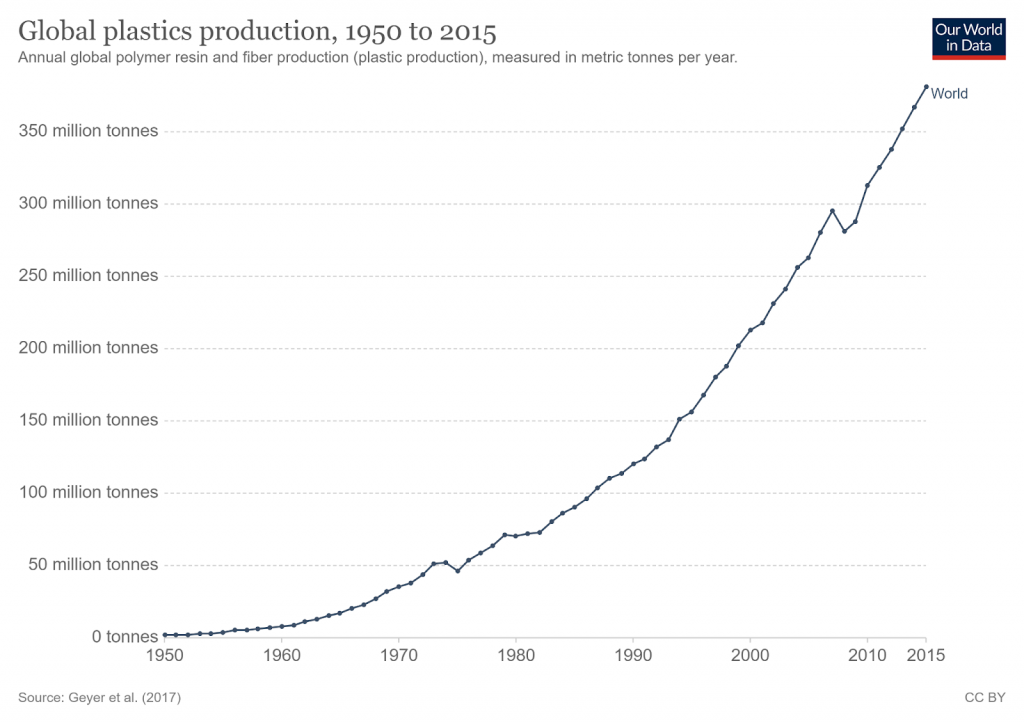Are Plastic Roads Sustainable? Here Are the Facts
Impactful Ninja is reader-supported. When you buy through links on our site, we may earn an affiliate commission.
Learn more
Learn more
.
Hey fellow impactful ninja ? You may have noticed that Impactful Ninja is all about providing helpful information to make a positive impact on the world and society. And that we love to link back to where we found all the information for each of our posts. Most of these links are informational-based for you to check out their primary sources with one click. But some of these links are so-called "affiliate links" to products that we recommend. First and foremost, because we believe that they add value to you. For example, when we wrote a post about the environmental impact of long showers, we came across an EPA recommendation to use WaterSense showerheads. So we linked to where you can find them. Or, for many of our posts, we also link to our favorite books on that topic so that you can get a much more holistic overview than one single blog post could provide. And when there is an affiliate program for these products, we sign up for it. For example, as Amazon Associates, we earn from qualifying purchases. First, and most importantly, we still only recommend products that we believe add value for you. When you buy something through one of our affiliate links, we may earn a small commission - but at no additional costs to you. And when you buy something through a link that is not an affiliate link, we won’t receive any commission but we’ll still be happy to have helped you. When we find products that we believe add value to you and the seller has an affiliate program, we sign up for it. When you buy something through one of our affiliate links, we may earn a small commission (at no extra costs to you). And at this point in time, all money is reinvested in sharing the most helpful content with you. This includes all operating costs for running this site and the content creation itself. You may have noticed by the way Impactful Ninja is operated that money is not the driving factor behind it. It is a passion project of mine and I love to share helpful information with you to make a positive impact on the world and society. However, it's a project in that I invest a lot of time and also quite some money. Eventually, my dream is to one day turn this passion project into my full-time job and provide even more helpful information. But that's still a long time to go. Stay impactful,Affiliate Disclosure
Why do we add these product links?
What do these affiliate links mean for you?
What do these affiliate links mean for us?
What does this mean for me personally?
![]()
Plastic roads: What originated and grew out of experimentation back in 2001 in India is now gradually becoming the focus of city officials worldwide to switch to environmentally sustainable road construction technology and contribute to less plastic pollution and climate mitigation. So we had to ask: How sustainable are plastic roads?
Plastic roads are a more sustainable alternative to regular roads. With plastic waste as their main material, they help reduce plastic pollution – in a manufacturing process that emits less greenhouse gases. And they are also more durable, flexible, and have a three times longer lifespan.
Plastic roads, a sustainable breakthrough in the construction industry, are paving their way into our reality. Let’s have a closer look at how sustainable they are throughout their life cycle!
Here’s How Sustainable Plastic Roads Are
Still, in its early stages of development, the concept of plastic roads is currently actively studied far and wide. Countries like India, the Netherlands, the UK, and Canada have been at the forefront of this innovative approach to road construction.
To understand the sustainability of plastic roads, we must assess their life cycle and each stage’s sustainability. This life-cycle assessment (LCA) is a method to evaluate the environmental impacts of products. Over the years, companies have strategically used LCA to research and create more sustainable products.
| The life-cycle stages of plastic roads | Each stage’s sustainability |
| Sourcing the materials for plastic roads | The sourcing of used plastic items solves the issue of uncontrolled and ever-growing waste in landfills and dumpsites. |
| Manufacturing plastic roads | The roads are manufactured in a more sustainable way emitting less greenhouse gas during the manufacturing process. |
| Usage of plastic roads | The lifespan of plastic roads is three times longer than traditional asphalt roads. They are more durable, flexible, and they develop fewer potholes. |
| End-of-life of plastic roads | Plastic roads redefine current waste strategies and offer a circular solution by being reheated at their end-of-life and repaved. |
Let’s have a closer look at each life-cycle stage’s sustainability.
How Sustainable Is the Sourcing of Plastic Roads
The sourcing of plastic roads uses an all-sustainable and smart approach by collecting used plastic items directly from landfills and dumpsites.
Plastic roads: they are made either entirely of recycled plastic components or mixed with other materials such as asphalt used in traditional road construction.
Today, plastic pollution represents a critical global issue. Every year, around 54% of plastic waste ends up in landfills where it is incinerated, contributing largely to our carbon footprint. About 8 million tonnes of plastic waste ends up in the oceans wreaking havoc on marine ecosystems. Meanwhile, there are around 25 million miles of roads across the globe. How do these two relate to each other?

Plastic does not decompose. It takes about 400 years for plastic to decompose and degrade, and much of it is still present to this date in some form or other. So, once it’s out there, it’s there for good. As an alternative to traditional plastic waste disposal methods, which only contribute to plastic pollution and climate change, a new, more sustainable circular usage of plastic waste has been developed – plastic roads.
The sourcing of plastic waste for road construction begins at landfill sites where plastic waste items are collected and sent directly to the manufacturing facility. Instead of damaging the ecosystem, the used plastic gets a new life.
Household plastic waste such as bags, bottles, straws, cutlery, and more are collected from plastic waste dumps or landfills and sent directly to the manufacturing facility. The used plastic gets a new life.
In many developing countries, pedestrian paths or bike lanes are made of 100% plastic waste with little to no asphalt used in the manufacturing process.
How Sustainable Is the Manufacturing of Plastic Roads
Sustainability plays an immense role in the manufacturing process of plastic roads.
Opposite to standard asphalt concrete roads, plastic roads are roads manufactured either entirely of circular and modular plastic components or a mix of plastic with other materials used in traditional road construction such as asphalt or bitumen.
But as plastic roads are a relatively new concept, manufacturing processes vary based on the type of road, purpose, elements, and components used in the mix.
As far as the manufacturing process, plastic waste is sorted, cleaned, purified, and shredded to a uniform size at the manufacturing facility. It is then melted at 330 degrees Fahrenheit and mixed with asphalt and hot aggregates in case of asphalt plastic roads or combined with other modular and circular plastic elements in case of roads made of 100% plastic.
In terms of sustainability of the manufacturing process, plastics in the asphalt mix allow for a lower working temperature, 20% less fuel required to manufacture, and fewer vapors emitted during the application process. The use of plastic in asphalt roads decreases the use of bitumen by 15%. There are also fewer transport movements necessary during the application process.
Pedestrian or bike lanes made of 100% plastic components are fully circular, fully recyclable, and reusable. Bits of the road are manufactured and distributed in such a way to be easily demounted and replaced in case of need. This contributes significantly to lower CO2 emissions and VOC.
How Sustainable Is the Usage of Plastic Roads
In terms of usability, plastic roads have an excellent sustainability record.
Plastic roads are three times more durable than standard roads. Their increased durability and flexibility ensure fewer traffic interruptions and less need for repair, being incredibly low maintenance.
The plastic content in the roads allows for high strength. Compared to the traditional asphalt roads, there are fewer potholes and generally little possibility of abrasion.
Plastic roads are climate-adaptive. They don’t absorb water when heavy rain pours. Instead, the water drains into the storage cavities where it seeps into the soil, binding the physical particles together for healthy and productive soil.
How Sustainable Is the End-of-Life of Plastic Roads
Plastic roads are a circular solution to plastic waste and can be reused and repaved as their life cycle comes to an end.
Ideally, plastic roads can end plastic waste from spreading into the ecosystem.
Once the plastic roads have reached the end of their life span, the plastic wax can be reheated and blended with hot aggregates and bitumen to complete the recycling process and lay new roads. In the case of roads made of 100% plastic components, ideally, the process will consist of reheating the old road pavement elements and repaving right after.
The whole reuse cycle is still debatable because most plastic roads that exist today are still in very good shape and there just hasn’t been a chance yet to put this theory to the test.
How Sustainable Are Plastic Roads Compared to Regular Roads
Plastic roads are an all-sustainable alternative to traditional asphalt roads.
Let’s start with the obvious: plastic roads help dispose of our ever-growing plastic problem. How big is this problem? Well, let’s let the numbers speak…

In addition, plastic roads have many advantages over our regular roads. And here are some of them:
- All plastic components can be easily prefabricated and laid down in a very short timeframe.
- Any bits of the road that need replacement can be easily demounted and replaced.
- Plastic roads are much lighter than asphalt surfaces, much more flexible and durable.
- It is estimated that plastic roads last three times longer than asphalt.
- Plastic roads are very low in maintenance and don’t develop potholes. So, less repairing is needed.
- Such roads made of plastic have great storage cavities that can be used as water drainage or to store necessary equipment.
Very soon, plastic roads may replace traditional asphalt roads due to their great sustainability record.
Can Plastic Roads Replace All Types of Regular Roads
According to the US and Canada regulations, 100% plastic roads are perfectly sustainable options for low-traffic areas. However, they do not YET meet the engineering requirements for widespread pavement application in areas with a high-traffic load.
For high-traffic roads instead, recycled plastic can be used as a binder in the asphalt mix. This mixed type of plastic road is currently the focus of most North American road construction projects.
Final Thoughts
The plastic roads concept has recently sprung up as a circular solution to the global plastic waste issue. Although rather new, many environmental organizations, businesses, and thought leaders talk openly about the great potential of these roads in reducing plastic pollution and contributing to carbon neutrality.
Plastic roads will be getting more traction soon as we are yet to fully realize their potential to tackle the biggest issues humankind is facing today. Undeniably, the use of plastic waste in road construction will make us one step closer to reaching sustainable development goals and protecting the ecosystem for a prosperous future for humankind.
Stay impactful,

Sources
- Science Direct: Life-cycle assessment (LCA)
- MIT SMR: Strategic Sustainability Uses of Life-Cycle Analysis
- The Index Project: Plastic Road
- National Geographic: A Whopping 91% Of Plastic Isn’t Recycled
- Our World in Data: The pathway by which plastic enters the world’s oceans
- Soluzione Plastiche: Plastic Roads For Sustainable Mobility
- Canadian Plastics: The Plastic Road Ahead
- K4D: Using Waste Plastics In Road Construction
- UTNE: Vancouver: Where The Streets Are Paved With Recycled Plastic
- Plastic Road: Plastic Roads
- Design Life-Cycle: Plastic Roads Life-Cycle
- Paint Square: Could Plastic Roads Replace Asphalt?




